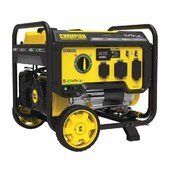I'm trying to get my gas furnace to work via my 12v solar setup.
I saw a guy on YouTube (and the eyes start rolling), he modified his furnace.
He cut his power input cord from the breaker box (turned the breaker OFF, first, of course) and connected it with a pig tail 3 prong cord.
He plugged that into a gas generator and got his furnace powered via generator.
Similar setups have been done with solar.
I have 12v system.
I was able to modify my furnace the same way. It plugs into a grid outlet (12v) and works normally.
Then, I unplug it from the grid outlet and I to my solar system.
It turns on (the little lcd thermostat in the living room).
It'll turn the fan on...but the gas doesn't trigger and thus, it's only spinning the fan and cool air.
I plug it back into grid and it works normally.
Why does my furnace work normally plugged into 12v grid..but doesn't work normally when plugged into 12v solar?
(I've got about a dozen deep cycle batteries in parallel and 5x 230 watt panels, also in parallel).
I've got an EAsun 80v mttp controller. A 2000 watt pure sine inverter.
In optimal sunny conditions, I've been able to power my kitchen refrigerator for about 12-14 hours.
I can do my washing machine, and most other stuff (tv+ stereo+consoles etc).
So...why won't the furnace work?
Thank you for your help.
I saw a guy on YouTube (and the eyes start rolling), he modified his furnace.
He cut his power input cord from the breaker box (turned the breaker OFF, first, of course) and connected it with a pig tail 3 prong cord.
He plugged that into a gas generator and got his furnace powered via generator.
Similar setups have been done with solar.
I have 12v system.
I was able to modify my furnace the same way. It plugs into a grid outlet (12v) and works normally.
Then, I unplug it from the grid outlet and I to my solar system.
It turns on (the little lcd thermostat in the living room).
It'll turn the fan on...but the gas doesn't trigger and thus, it's only spinning the fan and cool air.
I plug it back into grid and it works normally.
Why does my furnace work normally plugged into 12v grid..but doesn't work normally when plugged into 12v solar?
(I've got about a dozen deep cycle batteries in parallel and 5x 230 watt panels, also in parallel).
I've got an EAsun 80v mttp controller. A 2000 watt pure sine inverter.
In optimal sunny conditions, I've been able to power my kitchen refrigerator for about 12-14 hours.
I can do my washing machine, and most other stuff (tv+ stereo+consoles etc).
So...why won't the furnace work?
Thank you for your help.




